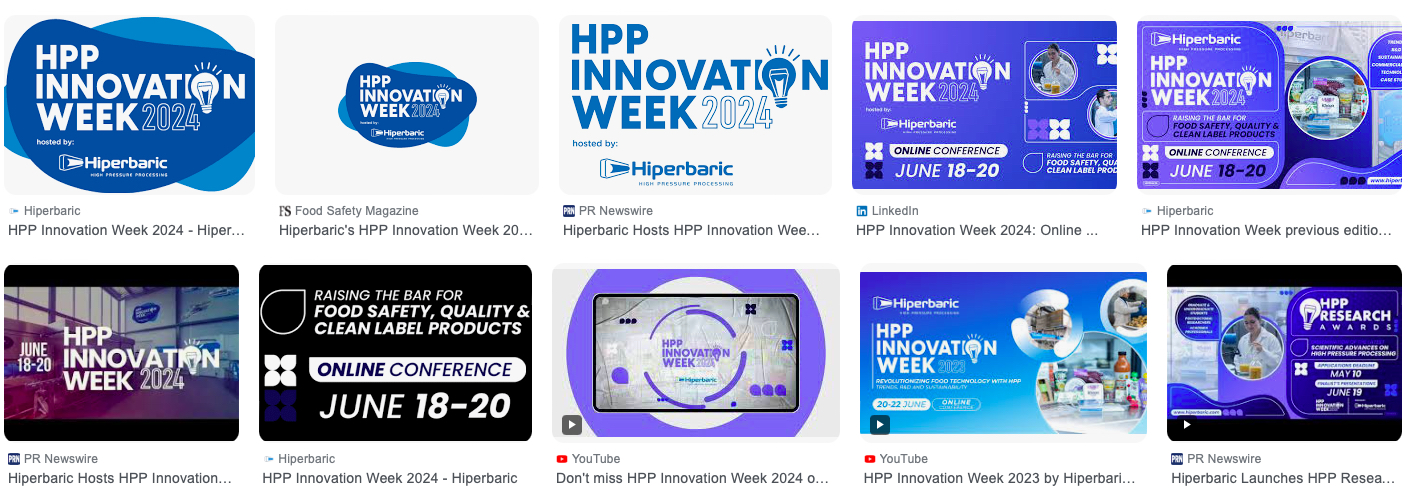Hiperbaric îs a global leader in commercial high pressure processing (HPP) technology and innovation. From June 18 to 20, they ran HPP Innovation Week, an event to promote innovation with this, the longest and most widely established non-thermal food processing technology in commercial use.
In attendance and representing Food Microbiology Academy was Chloe Lam. Chloe is a 3rd-year biomedical science student at Monash University who is currently undertaking a period of industry placement with us. Over this and the next blog article, is Chloe’s report on her attendance at the event. Until 19 July 2024, Chloe can be contacted at chloe.lam@foodmicrobiology.academy.
High Pressure Processing (HPP) is a nonthermal food preservation technology that uses hydrostatic pressure to inactivate microorganisms to achieve post-packaging preservation. The pre-packaged food product would be loaded into a basket in a vessel with low-pressure water. To instantly create a high pressure, intensifiers pump high-pressure water into the vessel. Food products would be held in the chamber to eliminate pathogens.
Benefits
This process can inactivate microbes from food, facilitating the creation of clean-label foods with minimal additives, while extending shelf-life and enabling access to long-distance markets. Compared to traditional pasteurisation, HPP has minimal effect on the composition, nutrition level, and the flavor of food. The technology is highly versatile, which is applicable across a wide range of food products including ready-to-eat meals, drinks, dips and sauces, baby food, and pet food.
One advantage of HPP over traditional pasteurization is its ability to improve the visual appearance of some food. Nonthermal HPP technology can retain or even enhance food appearance. This is well illustrated in avocado products. High pressure can inactivate the enzyme polyphenol oxidase PPO and prevent the browning of avocados. This, in turn, improves the overall appearance of guacamole and other avocado-based products over long-term storage. Beyond avocado, HPP can also positively impact the visual appearance of raw steak. Treated by HPP, raw steak redness is enhanced without affecting the eating qualities of cooked dark-cutting beef steaks. Steaks exhibit bright red color and have a lower level of reactive substance values, resulting in a more desirable visual presentation.
Another key benefit of HPP is its application in shucking – the extraction of meat from shellfish. HPP processes shucking at a faster rate and a lower yield loss.
In the case of oysters, HPP is highly recommended as a preservation treatment for several reasons. Firstly, HPP ensures food safety by controlling microorganism levels and extending the shelf life in selling conditions. Secondly, the high pressure of HPP loosens the muscle attached to the shell, allowing effortless extraction of crustacean meat without the use of heat, achieving a significant yield increase from 20-50% more than conventional methods and greatly reducing hand labor. Moreover, as HPP is carried out in a water-filled chamber, it can hydrate and moisturize oysters, leading to a more appealing appearance. A live shellfish would be preferred to preserve the quality and freshness of seafood. Interestingly, subjecting live shellfish to HPP may even lessen animal suffering, as noted by @Daniela Soto Castro. The shucking application of HPP can also be utilised for extracting fruit, such as durian, which is a more common practice in Asian countries. Overall, the advantages of HPP for shucking include improved efficiency, higher yields, reduced labor, and potential animal welfare benefits, making it a highly valuable technology for the shellfish and seafood industries.
Global Potential
HPP has a huge potential in the global market. Spain, US, China, and South Korea are major HPP markets. HPP are primarily used for preserving meat, guacamole, juices and ready-to-eat meals in these markets. An increasing trend of HPP systems is reported with a 15.68% growth of the HPP market from 2022 to 2023. The growth matches the current sustainable food trend of having less processed food with a healthier and cleaner label with minimal additives.
Besides, HPP automation can increase productivity in the industry. Food preserving would be more effective. HPP has a typical holding time of 3 minutes which can significantly diminish the level of spoilage and pathogenic microorganisms. Food preservation would be easier with the HPP.



